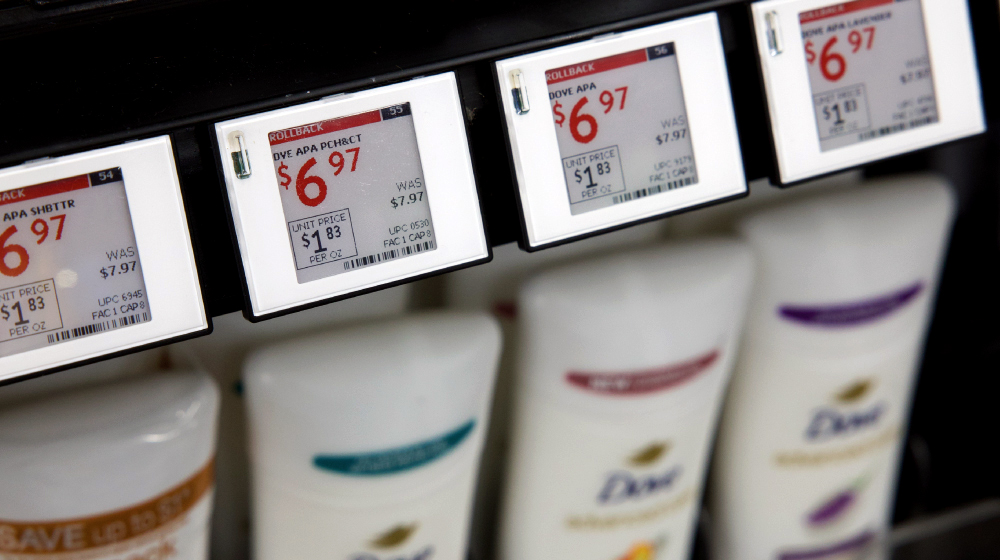A decade ago, dollar stores were seen as a significant threat to Walmart — and with good reason. From fiscal 2010 to fiscal 2015 (fiscal years ending the following January), same-store sales at Dollar General grew 23.6%. Dollar Tree was just over 24%, and Family Dollar nearly 17% (on a slightly different calendar).
For Walmart, over the five years same-store sales grew 3.4% — total. That included negative results in fiscal 2010 and fiscal 2014. An increasing focus on grocery by dollar stores, along with an intense campaign of store growth — in fiscal 2015 alone, the three chains combined opened more than 1,500 stores — suggested continued market share gains.
So emboldened were both Dollar General and Dollar Tree that they executed a bidding war for Family Dollar. Dollar Tree eventually acquired the chain for over $8 billion in 2015. Meanwhile, Walmart found a new chief executive officer as its stock underperformed. Walmart shares gained 81% in the first half of the 2010s, but the S&P 500 more than doubled; Dollar General stock tripled, and Dollar Tree more than quadrupled.
The performance of dollar store stocks suggested investors believed the outperformance would continue — and that, perhaps, Walmart’s best days were behind it.
But a decade later, the narrative has completely flipped. Walmart hardly seems worried about competition from dollar stores. Instead, backed by an impressive digital strategy, the company is going after Amazon. Its grocery business sailed through both the pandemic and subsequent inflation, gobbling up market share and cementing its position as the lowest-cost provider.
Meanwhile, the dollar store chains are scuffling. Last year, Dollar General fired its chief executive officer after less than a year on the job amid fines for safety violations, plunging sales, and seemingly unabated crime. Dollar Tree plans to close nearly 1,000 Family Dollar stores, and last week announced it might put the chain up for sale. Since the beginning of 2015, it’s been Walmart stock that’s been the winner. WMT has returned 180% including dividends against 98% for Dollar General — which is down more than half from its 2022 high — and just 58% for Dollar Tree.
The core question for the dollar stores is whether recent underperformance is cyclical — and fixable — or the sign of a deeper, more structural problem. The case for dollar stores going forward is that they are simply dealing with so many current headwinds. Lower-income consumers are bearing the brunt of persistent, if lower, inflation. Shrink is a massive problem: Dollar General is even removing self-checkout lanes from hundreds of stores to combat theft. Execution quite obviously has been an issue for both major chains; given labor shortages in many rural areas, both simply may have expanded too fast. Dollar Tree’s acquisition of Family Dollar was a self-inflicted wound, one the company is finally planning to heal via store closures.
In other words, this too shall pass. And in a more normalized environment, with better execution, both major chains can get back to their playbook of taking share from grocery and drugstores (the latter sector has been a major share donor over the past decade). That includes tailwinds from grocery, given that both chains serve rural areas in which choices, particularly for fresh items, remains relatively limited.
The more pessimistic view is that both Dollar General and Dollar Tree simply have fallen behind. The Walmart of today is a dramatically better business than the Walmart of a decade ago. Tens of billions of dollars of investment in digital capabilities and warehouse automation have created a radically different experience for shoppers.
For Dollar General and Dollar Tree, however, the experience is essentially the same. Both companies offer coupons via apps, but that’s hardly a competitive edge against the likes of Walmart or major chains like Kroger. Each offers same-day delivery, but via partners (Instacart for Dollar Tree, DoorDash for Dollar General) whose fees are likely too onerous for the companies’ low-income customers. Both companies have promised more aggressive investments in e-commerce and the broader digital experience, but the challenges of the past few years no doubt have redirected executive focus elsewhere.
Essentially, the debate among investors is whether dollar stores can succeed by getting back to basics. The old playbook worked for decades and allowed dollar stores to become major players in American retail, both in grocery and in general merchandise.
The world is different now, however, with a revamped Walmart, improvements at major chains like Kroger and Albertsons, and the rise of Amazon as a player even for everyday items. Dollar store executives still believe that their stores are vital to their communities and that all that really matters to customers is price and convenience.
That thesis would suggest that dollar stores simply need to execute better to regain their ability to take market share from larger rivals. But it’s possible that thesis is wrong, and in the age of the omnichannel, dollar stores have fallen behind those rivals for good. The argument will likely be settled over the next few years, but for now investors are skeptical. On Friday, both Dollar Tree and Dollar General saw their stock prices reach 2024 lows.
Vince Martin is an analyst and author whose work has appeared on multiple financial industry websites. He’s the lead writer at Overlooked Alpha, which offers market-wide and single-stock analysis every week. As of this writing, he has no position in any securities mentioned.
The Food Institute Podcast
Funding sources are drying up and inflation is making it harder and harder for higher-priced food brands to compete – what’s an early-stage food company to do? Dr. James Richardson, owner of Premium Growth Solutions and author of Ramping Your Brand, joined The Food Institute Podcast to discuss what types of food companies are succeeding under current industry dynamics.












